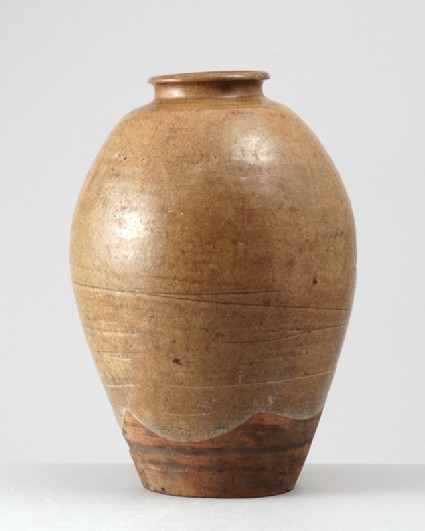Browse: 321 objects
Ovoid storage jar
- loan
-
Details
- Associated place
- Date
-
11th - 12th century (1001 - 1200)
Song Dynasty (AD 960 - 1279)
- Material and technique
- stoneware, thrown, with yellow glaze; unglazed base; glazed rim
- Dimensions
-
27.6 cm (height)
18.7 cm (diameter)
at base 10 cm (diameter)
- Material index
- Technique index
- Object type index
- No. of items
- 1
- Credit line
- Lent by the Sir Alan Barlow Collection Trust.
- Accession no.
- LI1301.359
-
Further reading
University of Sussex, and Arts and Humanities Research Council, The Barlow Collection, supervised by Regina Krahl, Maurice Howard, and Aiden Leeves (Sussex: University of Sussex, 2006), no. C359
Glossary (2)
glaze, stoneware
-
glaze
Vitreous coating applied to the surface of a ceramic to make it impermeable or for decorative effect.
-
stoneware
Ceramic material made of clay which is fired to a temperature of c.1200-1300⁰c and is often buff or grey in colour.
Location
-
- currently in research collection
Objects are sometimes moved to a different location. Our object location data is usually updated on a monthly basis. Contact the Jameel Study Centre if you are planning to visit the museum to see a particular object on display, or would like to arrange an appointment to see an object in our reserve collections.
Publications online
-

The Barlow Collection
The heavily potted ovoid jar has a narrow mouth with rolled rim and a flat, concave base. The buff stoneware is covered with a yellowish glaze, which ends in an uneven line well above the base. The glaze has discoloured to an olive-brown tone and has an overall stained crackle, due to use or burial.
© 2013 University of Oxford - Ashmolean Museum



